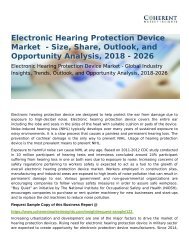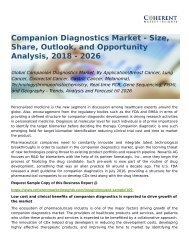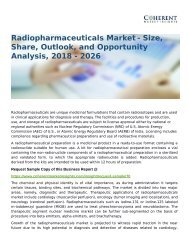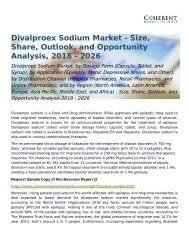Global Flow Cytometry Market - Global Opportunity Analysis, 2025
The use of flow cytometry in clinical laboratory has grown substantially due to the development of smaller, user-friendly, less expensive instruments and increasing number of research application such as, immunophenotyping, cell sorting, cell cycle analysis, Apoptosis, cell proliferation assays, and intracellular calcium flux is expected to favor the growth of flow cytometry market. Besides, flow cytometry has a unique ability to investigate large cell populations at the single-cell level. This favors the adoption of flow cytometry for clinical application.
The use of flow cytometry in clinical laboratory has grown substantially due to the development of smaller, user-friendly, less expensive instruments and increasing number of research application such as, immunophenotyping, cell sorting, cell cycle analysis, Apoptosis, cell proliferation assays, and intracellular calcium flux is expected to favor the growth of flow cytometry market. Besides, flow cytometry has a unique ability to investigate large cell populations at the single-cell level. This favors the adoption of flow cytometry for clinical application.
Create successful ePaper yourself
Turn your PDF publications into a flip-book with our unique Google optimized e-Paper software.
REPORT DESCRIPTION<br />
<strong>Global</strong> <strong>Flow</strong> <strong>Cytometry</strong> <strong>Market</strong> – Overview<br />
<strong>Flow</strong> <strong>Cytometry</strong> – It’s not just for immunologist anymore<br />
<strong>Flow</strong> cytometry is a widely used method for analyzing the expression of cell surface and intracellular molecules. It can also<br />
characterize and define different cell types in a heterogeneous cell population. Moreover, flow cytometry also allows<br />
simultaneous multi-parameter analysis of single cells. The growth in flow cytometry market is mainly driven by the<br />
combination of technological improvements, growing research activities in life science and increasing clinical application of<br />
flow cytometry, such as diagnosis of HIV and cancer. Use of more robust photodetectors and new laser emitters, use of LED<br />
lamps as emitter, and changes in analytical capacity (multidimensional analysis software) are examples of recent improvements<br />
in flow cytometry. Furthermore, major advancements in flow cytometry revolve around new approaches combining existing<br />
technologies with routine laboratory procedures, such as imaging, which makes the acquisition of images of cells possible in<br />
real time as they pass by the interrogation point. The use of flow cytometry is also seen mostly in cytology, hematology,<br />
immunology, and microbiology, among other research fields.<br />
However, lack of skilled technicians for data interpretation & technology implementation is restraining the adoption of flow<br />
cytometry, especially in emerging economies.<br />
The global flow cytometry market was valued at US$ 3.2 Bn in 2016 and is expected to witness a robust CAGR of 10.2 % over the<br />
forecast period (2017-<strong>2025</strong>).<br />
© Coherent market Insights. All Rights Reserved


















